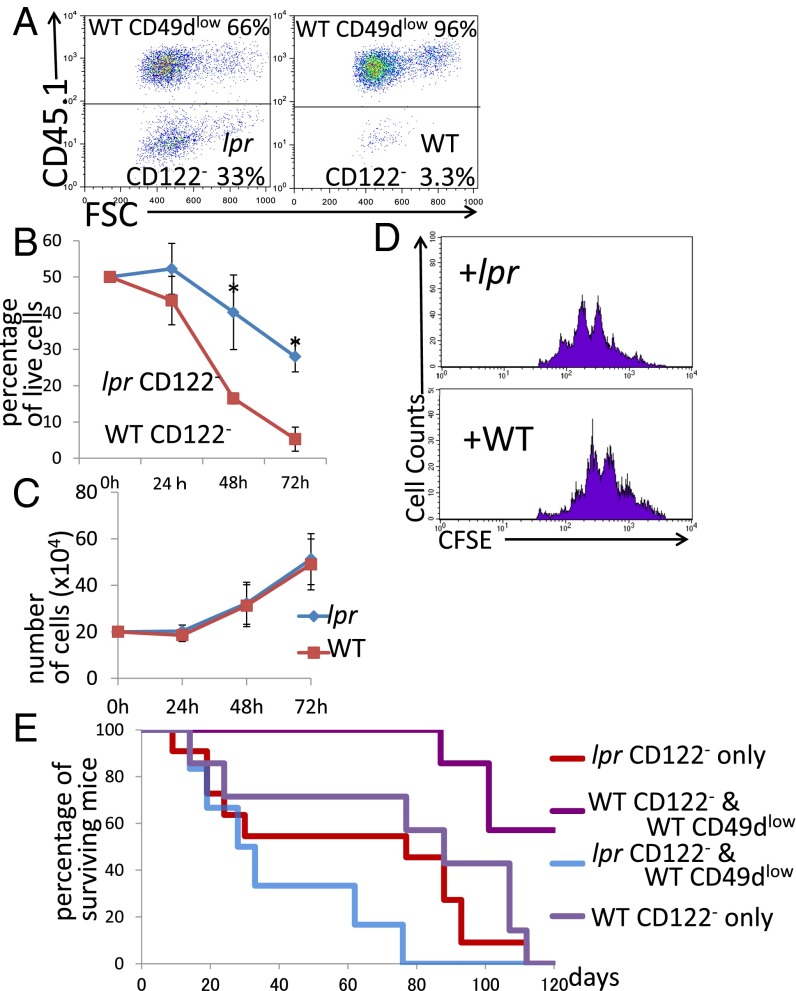Fig. 2.
(A and B) Analysis of regulatory activity in coculture of CD49dlow cells (CD45.1) and CD8+CD122− cells (CD45.2) derived from lpr mice and wild-type mice. (A) Representative results after 72 h of coculture obtained from three independent experiments are shown. (Left) CD122− cells (lpr) cocultured with CD49dlow cells. (Right) CD122− cells (WT) cocultured with CD49d− cells. (B) The percentages of CD8+CD122− cells among total live cells are shown. *Significantly different (P < 0.05, Student’s t test). (C) Absolute numbers of CD122− T cells derived from WT mice (red line) and lpr mice (blue line) in simple culture were determined. At all time points, the values obtained for lpr mice-derived cells and WT mice-derived cells were not significantly different (P > 0.05, Student’s t test). (D) CD8+CD122− T cells (WT or lpr) labeled with CFSE were cocultured for 48 h and analyzed. The dilution patterns of CFSE are shown as representative results of three independent experiments. (E) Analysis of adoptive T-cell transfer of CD122− T cells from WT or lpr mice mixed with CD49dlow T cells of WT mice into RAG-2–deficient mice. Addition of WT mice-derived CD49dlow T cells to lpr mice-derived CD122− cells (blue line) did not affect survival; survival of these mice was not significantly different from that of mice receiving lpr mice-derived CD122− cells alone (red line; log-rank test, P = 0.0878; Wilcoxon test, P = 0.2537).

